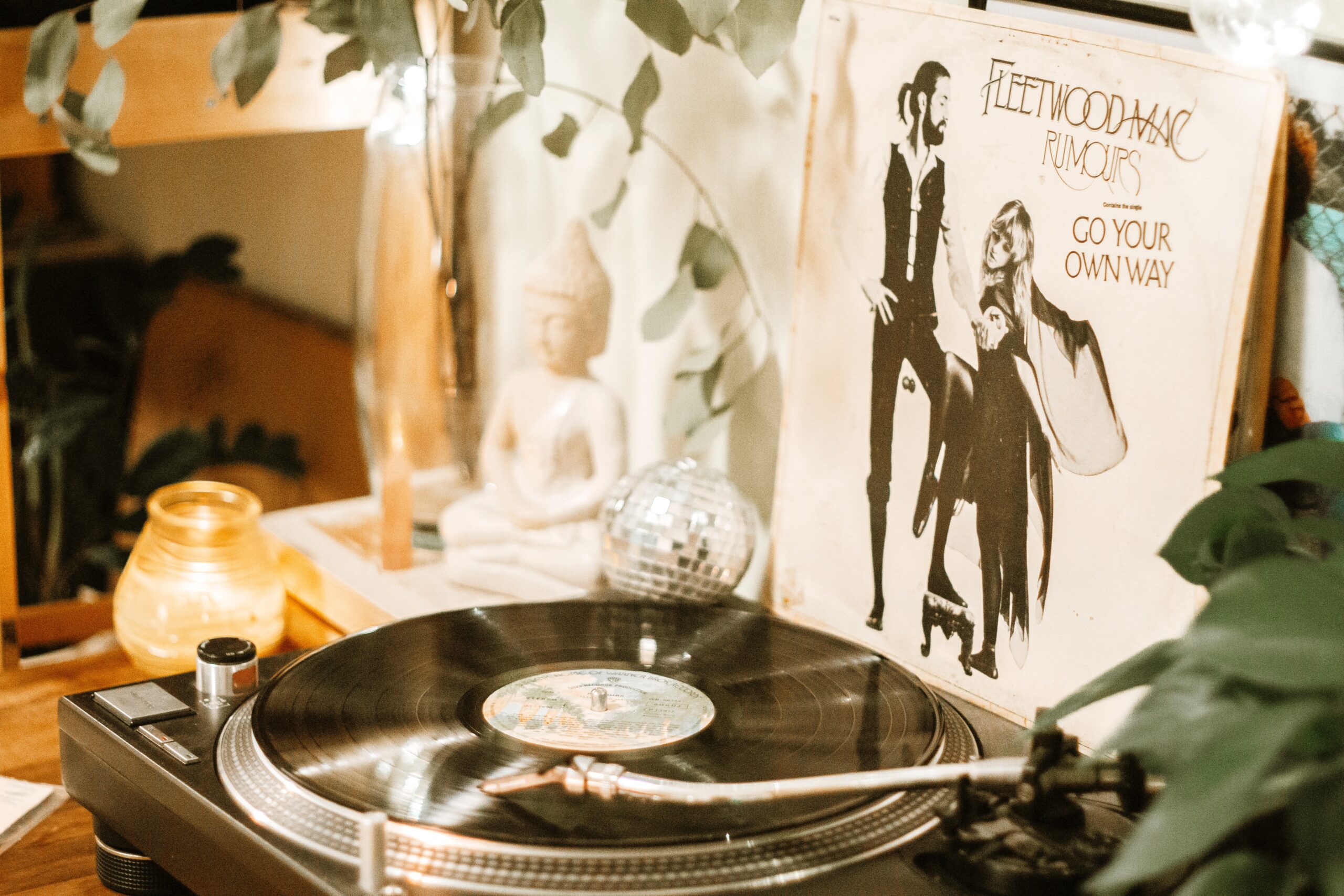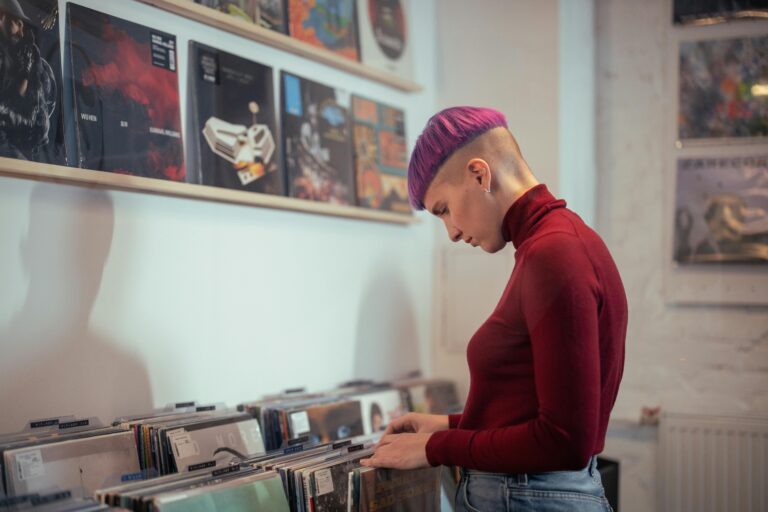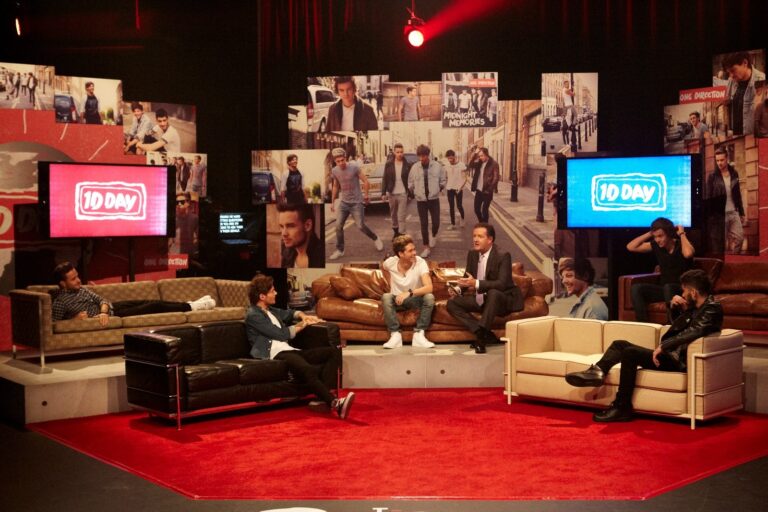Making The Most of Your Vinyl: 10 Essential Tips
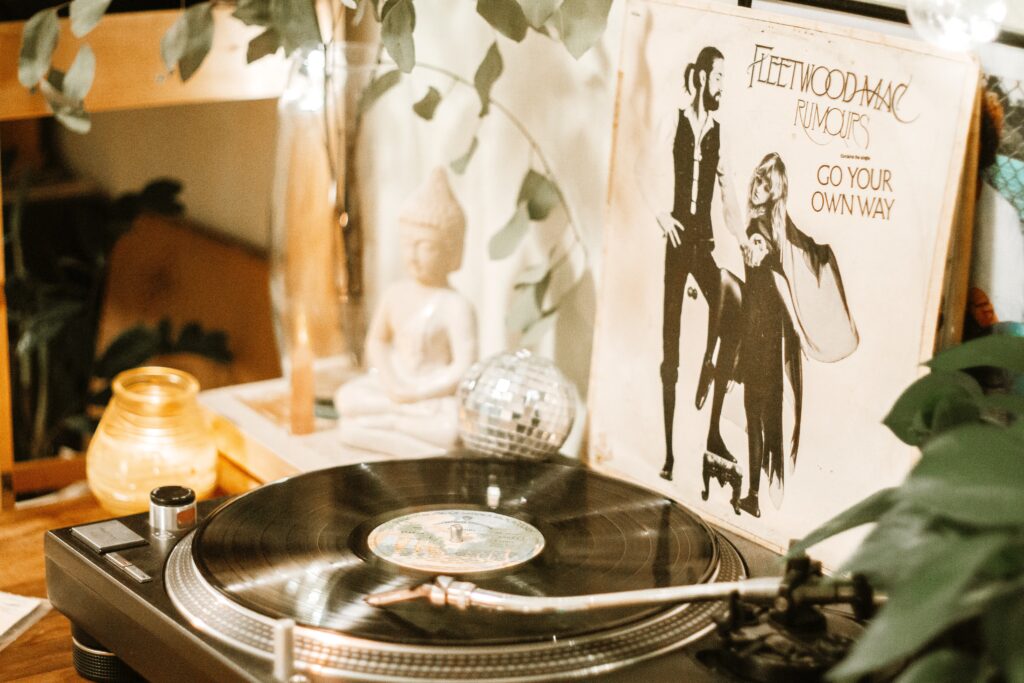
For music fanatics around the globe, songs are now readily available at our fingertips. It’s quick, convenient and, more often than not, a cost-effective way to access music at the touch of a single button. But with the turn of the digital age, the quirks and nuances that made music exciting were left somewhat by the wayside. Those novel experiences of peeling back the cellophane wrap, turning the record and perfectly aligning the needle to tap into that one track were gone. Until vinyl made its resurgence.
We’re sharing the best tips and tricks to get the most out of your vinyl, whether you’re a newbie on the scene or a long-time listener. The A-Side of this guide covers the fundamentals of vinyl, whilst the B-Side offers some handy tips to keep your vinyl in tip-top condition.
So, if you’re more than just a passive music consumer, vinyl is a fantastic way to enjoy your collection. Let’s jump in.
Getting Started
Prior to purchasing anything, it’s important to do your research. With vinyl, there’s a lot more to consider than initially meets the eye. Vinyl isn’t a cheap hobby and the most expensive but most important part of any set-up is, without doubt, the turntable itself.
You’ll have seen the aesthetically pleasing suitcase players banding about online over the last couple of years, but our advice is to avoid them entirely. Yes, they look lovely and quaint, but if you’re serious about making a collection that lasts, push them out of your mind entirely. We’ll delve into the subject of suitcase players a little later, but as with any investment, it’s important to do your product research thoroughly before throwing any money out there.
Start by thinking about the equipment you already have: Do you already have a pair of decent speakers? Are they Bluetooth-compatible? Do you even want a Bluetooth turntable, or do you want something more structured? What budget do you have to play with? How many plug sockets do you have for your set-up? These are all things that should be considered before spending a single penny. If not, you could end up burning a considerable hole in your pocket before the needle even hits the record.
Setting Up
What do you actually need to play your vinyl? That entirely depends on how you want your record to sound. In our experience, the better the set-up, the better the sound. It really is as simple as that, but we’re not telling you to spend hundreds, if not thousands on a top-of-the-range product. Plenty of options make collecting and listening to vinyl easy, affordable, and most importantly exciting, but knowing which products to go for and which to avoid ensures you make a lasting investment, and not something which will break by this time next year.
Your Turntable
To start with, you’re going to need the turntable system. This is the bulk of the player that spins the record and drops a needle to deliver that heavily anticipated sound. Pricewise, these can range from anywhere between £100 and £1000, but there are a couple of important features you should be looking out for including a built-in counterweight and a pre-amp (these are usually built-in to modern turntables.)
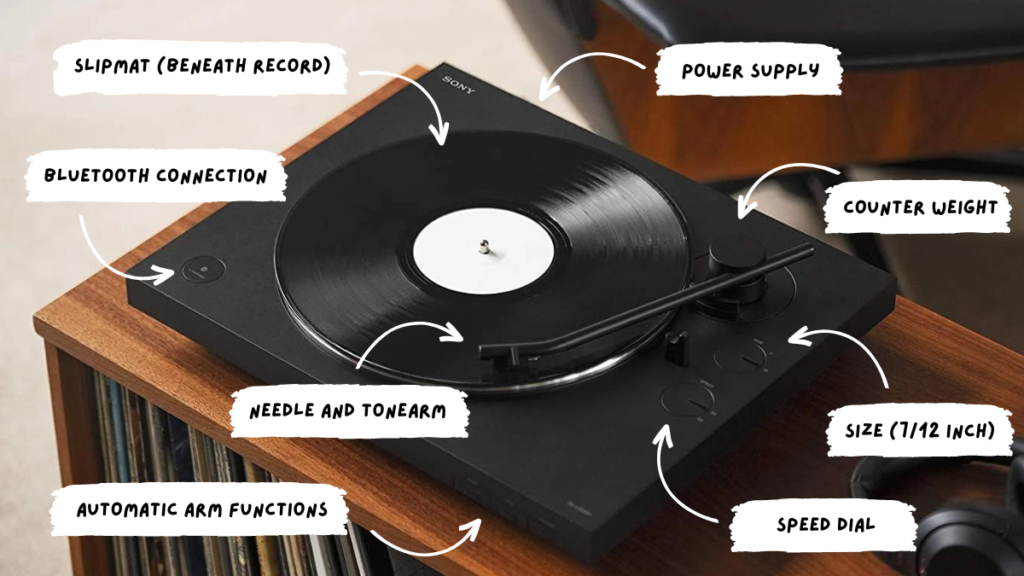
Needles
It’s recommended that needles are replaced every 3-5 years or around every 1000 hours of listening to ensure minimal damage to the record as well as enhanced pick-up. If you’re buying a new turntable, chances are there will be one, perhaps two already included and in position. Replacement needles aren’t expensive, some decent ones run as cheaply as £10, but they’re an important part of your set-up that shouldn’t be neglected!
Your Speakers
A good set of speakers doesn’t have to break the bank. What they do have to do, however, is give maximum output to give you that real vinyl listening experience.
When it comes to choosing the right speakers for your set-up, it’s largely down to personal preference. If your speakers are wired directly into the back of your turn table, it does limit you slightly, but, if your turntable supports Bluetooth connectivity, there are so many options available. You could position speakers in different corners of the room for that all-around sound, with your subwoofer (if desired) in another corner to create a full and rich sound.
With speaker positioning, it’s always a game of trial and error. What isn’t a game, however, is choosing a good set. We’d recommend the Elac Debut B5.2 if you have a bit of room to play with, or, if you’re working with a tighter set-up, the Q Acoustics 3010i and 3020i.
Adding a Subwoofer
In the words of Meghan Trainor, a subwoofer really is all about that bass. If you want your vinyl to really pack a punch, the devil is in the detail. Most speakers (particularly if they’re controlled via an app) do allow you to adjust the bass and treble in an equalizer, but a subwoofer will deliver that full, bass-brazen sound time and time again.
It’s important here to say that subwoofers are not an essential purchase for your set-up! Don’t feel like you have to have one because that certainly isn’t the case, but they can enhance your sound massively if you want to really invest in your set-up.
Don’t Buy A Suitcase Player!
The beloved suitcase players made their first real appearance in the 2010 Tumblr days, with sales skyrocketing and popularity growing exponentially. They may look aesthetically pleasing, but if you’re serious about music and want to maintain the integrity of your records, you should avoid them at all costs.
Why? Without getting too technical and nerdy on you, the needle – the part that sits in the grooves of a record and directs the sound to the speaker – is often poorly balanced. Crosley is the main offender here, with countless stories shared online of pristine records ruined by their poor quality and design. Turntables and needles are sensitive and cleverly calculated components to ensure top-quality, low-damage plays, allowing you to enjoy your records time and time again. So that is where the suitcase player falls at the first hurdle.
Another of these players’ flaws is the speakers, which are often built into the system for ease and convenience to the user. Now, you may be thinking, “Oh that’s great! If it’s already got speakers inside, I can save myself some serious money!” But this is where many go wrong. Sure, these built-in speakers will turn out a sound, but it won’t be great, and it will no doubt leave you disappointed if you like your music loud.
There are plenty of articles online talking you through the pros and cons of suitcase players like the Crosley Cruiser. Take a read of these ones from Vinyl Restart, What Hi-Fi and Notes on Vinyl if you want to do more research. But our advice? Run.
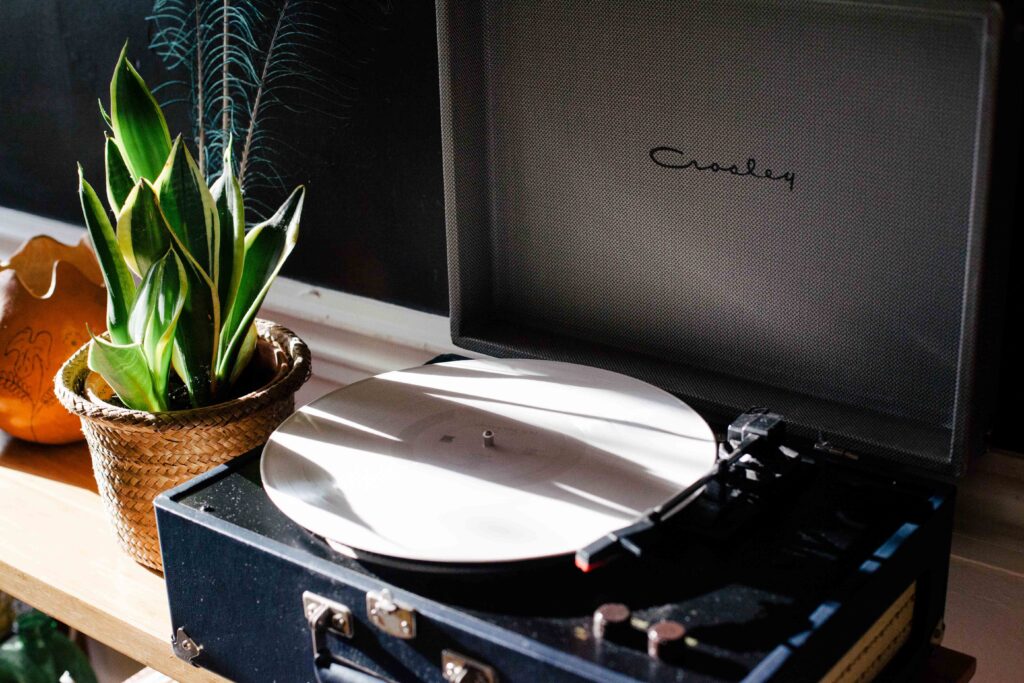
Keep the lid down whilst playing, or off entirely!
If your record player has a lid, don’t leave it open whilst spinning your favourite record. The lid is designed to prevent any dust from landing on your turntable and most importantly your records. So, if you’re listening, either remove the lid entirely (which some turntables allow you to do), or just keep it closed. Leaving it open allows that dust to settle on your records, potentially leading to damage, and, can also create static which will interfere with the connection between your record and the needle.
Keep your records clean
The key to keeping your records clean and in pristine condition is to keep them stored upright in their sleeves. Don’t leave your discs stacked on top of each other or leaning against one another as this will only compound the problem of static, and potentially damage the records beyond repair.
An anti-static brush is a great purchase for keeping your records in the best shape. In many cases, the fibres used in the brushes help to reduce any static that may be sat on your records, whether that’s from their position in the sleeve, or, leaving them uncovered on your turntable. The trick is to use long, gentle strokes to keep the static at bay!
Buy records second-hand
If there is one area where you can save yourself a bit of money, it’s buying vinyl second-hand. Whether you go to a shop to buy them in person or purchase them online from the likes of eBay or Depop, vinyl doesn’t have to be expensive. Sure, new releases or limited-edition presses are going to cost a little more, but if you’re after a record that was released a couple of years ago, second-hand may be the way to go.
If viewing in person, take a close look at the vinyl and inspect for any scratches or dents that could impact its play. Chances are, if there aren’t any visible marks, you should be all good!
Consider your set-up placement
It goes without saying, but your turntable should be kept on the flattest surface possible. They are sensitive instruments and have been balanced during the manufacturing process to work best in these conditions. So, don’t go placing your turntable on top of a drawer set that requires some wiggling to open, especially if you’re going to be needing to use it whilst spinning. Doing so risks damage to your record and jumping.
With your speakers, you don’t want to place them directly next to your turntable either. If you like your music loud, this is a complete no-no. The thumping bass from your speakers could force your record to jump, causing not only artificial damage but operational damage too, to both the record and the needle.
Vinyl delivers a listening experience which is something that streaming services have yet to achieve. If you follow these tips and tricks, you should arrive at the perfect, listening setup.

